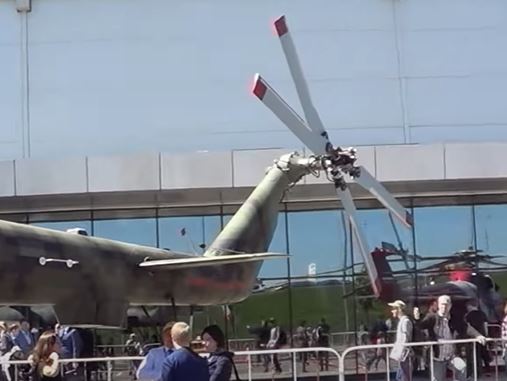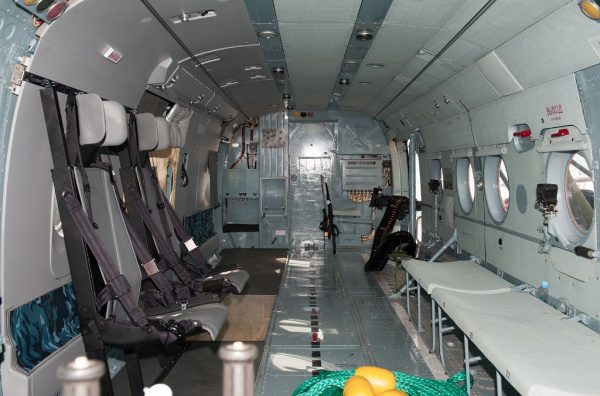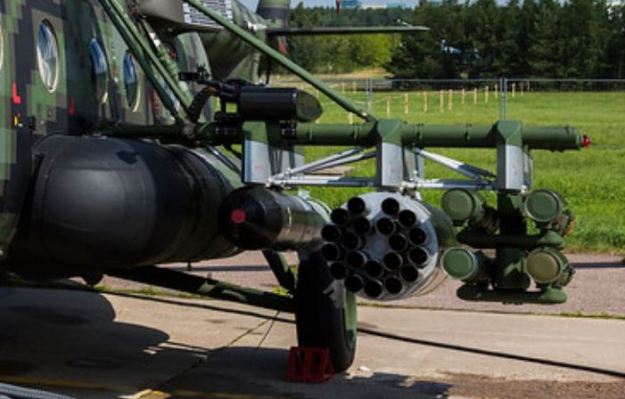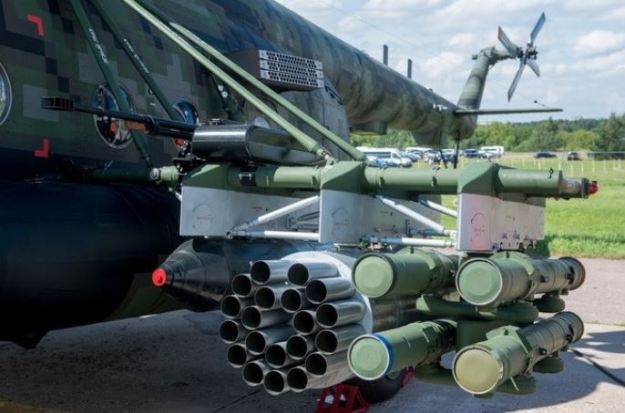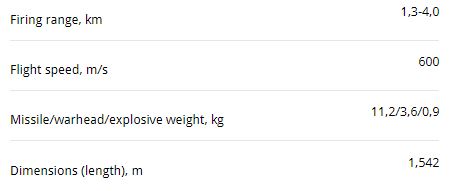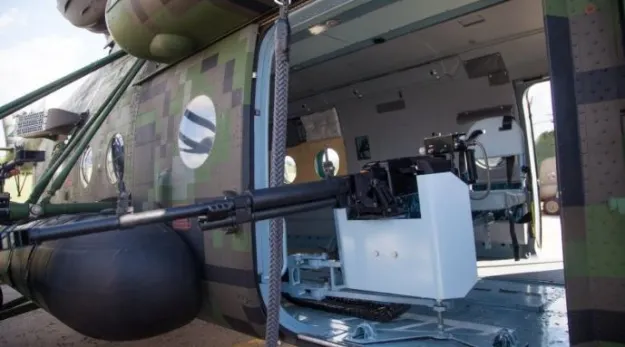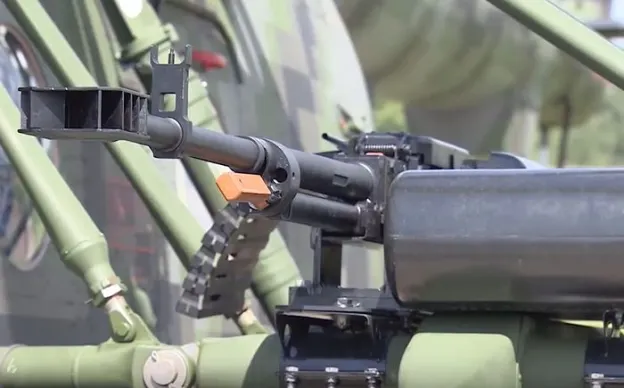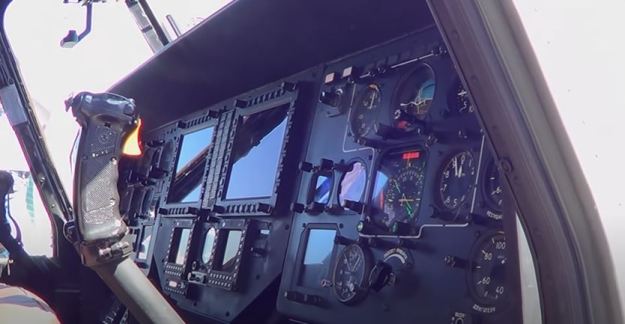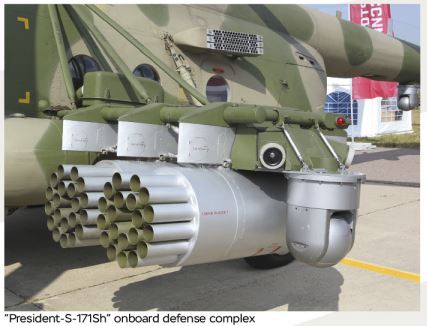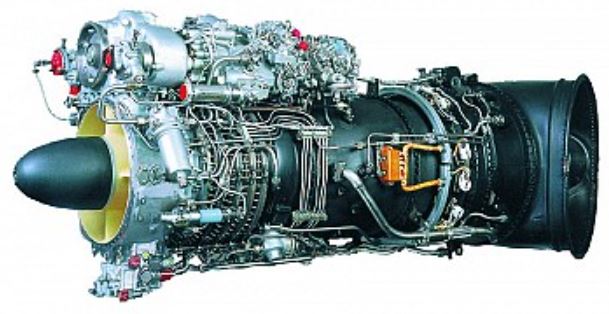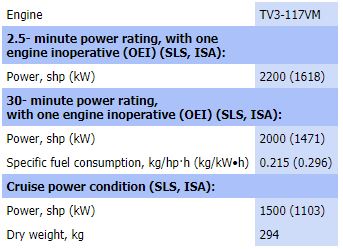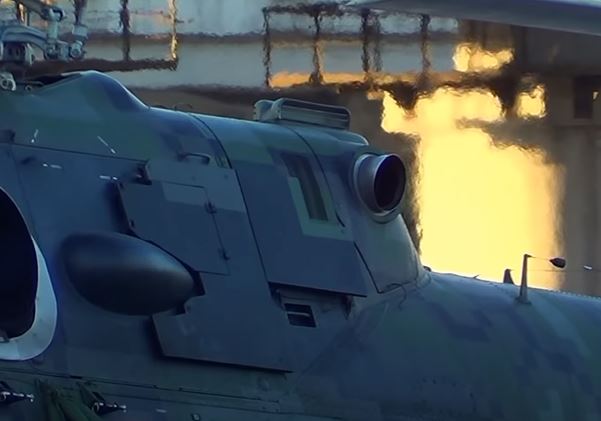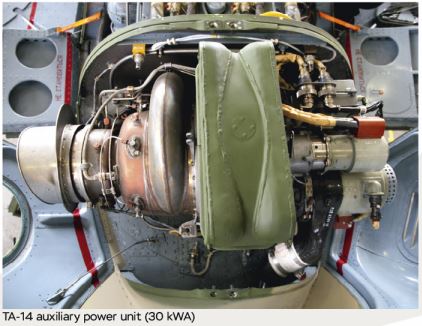JSC Russian Нelicopters unveiled Mi-171SH-HV military transport helicopter at the MAKS-2017 International Aviation and Space Show held in Moscow, Russia, in July 2017. It is a new variant in the Mi-8/17 family of multi-mission helicopters.
Designed for use by the special forces, the Mi-171SH-HV variant comes with advanced navigation and surveillance equipment, powerplant and combat efficiency. It can be used for a wide range of missions, including ground attack and personnel / cargo transportation.
Mi-171SH-HV design and features
The Mi-171SH-HV military transport helicopter is designed by JSC Ulan-Ude Aviation Plant based on the Mi-8/17. It is manned by three crew members and is capable of carrying up to 28 personnel.
The composite five-blade main rotor assembly improves the helicopter’s performance. The tail rotor assembly has four blades configured in X-shape.
The helicopter’s take-off and landing operations are supported by a landing gear assembly consisting of two single-leg main gears and a double-wheeled nose gear.
The fuselage is outfitted with sliding doors on each side of the cabin for passengers. A hydraulic cargo ramp at the rear allows for loading and unloading of cargo.
The helicopter has a payload capacity of approximately 4,000kg and a maximum take-off weight of 13,500kg.
Armament of Mi-171SH-HV multi-mission helicopter
The Mi-171SH-HV military transport helicopter variant is equipped with six external hardpoints for carriage of missiles, rockets, weapons and guided bombs.
Rockets S-8
The S-8 unguided aircraft rockets designed to destroy any ground targets and are used on almost all Russian-made military helicopters and aircraft.
The rockets are powered by a versatile solid fuel rocket motor.
Their construction has incorporated progressive methods for body forming from ready-made rolled aluminum, original design (locking of folding fins) and process solutions aimed at reducing manufacturing man-hours, costs and increasing operational reliability.
Currently, the following types of rockets are offered for export:
- S-8KOM – with HEAT fragmentation warhead;
- S-8BM – with concrete-piercing (penetrating) HE warhead;
- S-8T – with tandem HEAT fragmentation warhead;
- S-8DF – with FAE warhead;
- S-8OM – with illuminating warhead;
- S-8PM – with chaff warhead;
- S-8TsM – with target designating (smoke) warhead.
Operating temperature range of all rocket versions is ±60º C, the caliber – 80mm.
S-8KOM
Designed to destroy armored, light armored and soft-skinned materiel. Owing to the fragmentation effect, the rocket also inflicts damage on manpower.
Source roe.ru
Up to eight Ataka anti-tank guided missiles, four mounted on each side, are used to destroy main battle tanks with explosive reactive armour. Two OFAB-250 high-explosive fragmentation incendiary bombs are carried to defeat light armoured targets and fuel stores.
Ataka anti-tank guided missiles
The guided missile is performed in two versions 9M120 and 9M120F differing in the warhead type. Intended to fire from Shturm-V systems deployed on Mi-23V, Mi-28, Mi-8AMTSh, and from Shturm-S systems mounted on the 9P149 combat vehicle.
Technical data
Missile Versions:
| Caliber, mm | 130 |
| Length, mm | 1830 |
| Weight, kg | 49.5 |
| Firing range, m | 1000…5800 |
| Maximum flight velocity, m/s | 550 |
| Allowance of ammunition: | |
| Mi-24V (Mi-28) helicopter | 8 (16) |
| 9P149 combat vehicle | 12 |
| Operational conditions: | |
| — height range above sea level, m | 0…4000 |
| — temperature range, °C | ±50 |
9M120 Antitank guided missile
Equipped with a HEAT warhead and is intended to engage tanks of all types, including those screened by ERA.
Penetration at normal to the homogeneous armor with ERA — 800 mm.
Warhead type — tandem, extendable.
9M120F Guided missile
Equipped with a HE/fuel-air explosive warhead and is intended to suppress fire emplacements, bunkers, soft-skinned and lightly armored vehicles, aviation materiel, and sheltered personnel.
Blast effect in TNT equivalent — up to 9.5 kg.
Source zid.ru
A UPK-23-250 gun pod with GSh-23 twin-barrelled autocannon is fitted to provide a high rate of fire against enemy aircraft. The helicopter carries two 12.7mm-calibre Kord machine guns near the left and right doors. An additional two 12.7mm-calibre bow machine guns are suspended on the truss structure.
UPK-23-250 gun pod
The UPK-23 is a gun pod of a fairly simple design. The round aerodynamic pod houses a single fixed twin barrel GSh-23L autocannon at the front and associated ammunition at the rear. For operation the pod requires external power which is provided by the aircraft. Since the cannon is fixed it is aimed by pointing the aircraft in the direction of the target. Compared to the SPPU-22 pod with similar but flexible armament the UPK-23 is much lighter.
Firepower
The UPK-23 features a single twin barrel GSh-23L autocannon and 250 rounds of 23x115mm ammunition. The cyclic rate of fire is 3.000 rpm and the maximum effective range is 2 km. The 23mm rounds are effective against infantry, soft skin vehicles and light armored vehicles.
Users
The UPK-23 is most commonly found on the Mi-24 Hind attack helicopter and armed version of the Mi-8 Hip transport helicopter, but is used ground attack fighters such as the Su-17, Su-25 and MiG-23 as well. For fixed wing aircraft the slightly heavier SPPU-22 gun pod with flexible armament usually is a better option. The UPK-23 remains available although it is unknown if these are newly produced or refurbished pods. Source weaponsystems.net
12.7mm-calibre Kord machine guns
12.7 mm tank mounted machine-gun with an electric release can be installed on various moving and stationary objects for fighting low flying aerial threats, for destroying lightly armored and unarmored materiel, weapons and concentrated enemy personnel.
Technical data
| Calibre, mm | 12,7 |
| Firing rate, shot/min | 600-750 |
| Muzzle velocity of a bullet, m/s | 820-860 |
The machine-gun is designated for the defeat of non-armoured and lightly armoured technical facilities and living force of enemy at the distances of up to 2000 m as well as for the defeat of low-flying air targets at slant distances of up to 1500m. It can be used both as a hand machine-gun and as machine-gun mounts on combat technical facilities such as helicopters, boats, vehicles and so on. Source zid.ru
Mi-171SH-HV’s weaponry also includes two S-8 rocket launchers and a 7.62mm PKM medium machine gun, which is mounted at the rear.
Survivability features
The cockpit and cargo cabin floors are equipped with a spall liner, which is made using removable lightweight Kevlar armour to provide increased protection for the occupants. Kevlar armour is also installed on the left and starboard sides near the portholes.
The energy absorption ability of the seats provides superior protection to the crew members.
The crashworthy design of the landing gear provides improved survivability for the personnel during landing operations.
Avionics of Mi-171SH-HV variant
The Mi-171SH-HV multi-mission helicopter features a glass cockpit with new flight-navigation equipment, digital autopilot, and reliable analogue instruments.
The cockpit with night vision goggle compatibility offers high-combat survivability for the helicopter in hostile environments, during both the day and night.
Situational awareness for the crew is provided by electro-optical systems mounted in two gyro-stabilised platforms located below the nose section.
The Mi-171SH-HV variant also incorporates forward-looking infrared radar (FLIR) system, searchlight, dual-band antenna, and infrared emitter.
– installation of two rotating spherical covers of the electro-optical navigation and aiming system on the sides of the abdomen of the bow of the fuselage, directly in front of the bow landing gear. While the left spherical cover hides the optics of the navigation electro-optical system, which facilitates piloting at night and in difficult meteorological conditions, the electro-optical system installed in the right spherical cover is used to search and track targets and guide weapons.
Radar
One weather radar type A813S Kontur-10S with mechanically rotated slot antenna. This type of radar is located inside the tip of the fuselage and in addition to monitoring dangerous meteorological phenomena, it is also used for navigation. It is able to detect dangerous meteorological phenomena (in automatic mode) at a distance of 150 km. In case of turbulence, its detection range (in automatic mode) is then 100 km. While the city (the size of Velký Novograd) is able to detect this type of radar at a distance of 150 to 200 km (when flying at an altitude of 7,000 m), a surface vessel weighing 2,000 t at a distance of 50 to 70 km (when flying at an altitude of 3,000 m), the coast at a distance of 250 km (when flying at an altitude of 7,000 m). Source ruslet.webnode.cz
Countermeasures
The Mi-171SH-HV is installed with the President-C air defence complex developed by KRET to counter threats from enemy surface-to-air missiles, man-portable air defence missile systems (MANPADS) and other short-range anti-aircraft missile systems equipped with infrared and radar homing guidance systems.
President-C air defence complex
The President-S was designed by developers in Russia to offer unparalleled protection against MANPADS missiles.
Comprehensive protection is provided by:
– Optical-electronic interference stations that protect the helicopter by forming a directed interference at the infrared seeker.
– UV detector for detecting and transmitting the location of air-to-air and surface-to-air missiles as soon as they are launched
– Equipment for the detection of laser irradiation and locating the coordinates of its location
-Control unit, which provides integrated control and information processing and controls all elements of the system simultaneously.
– Multi-panel display and a system that distinguishes false targets.
-A flare-dispensing system
The optical-electronic system President-S was developed on the basis of heavy analysis of various protection systems of the previous generations. The President-S is unique due to the fact that it implements several sub-systems of detection and countermeasures into one, giving it the ability to effectively counter heat-seeking missiles. As soon as a missile is launched at the helicopter, the UV finder immediately relays the missile’s coordinates to the control system, which simultaneously sets off the flare dispensers and activates the optical-electronic interference stations. It also alerts the helicopter’s crew of the attack via system-generated voice messages and digital information on the multi-panel displays. The coordinated work of all sub-systems results in the homing missile losing “sight” of the real target. Source russianmilitaryphotos.wordpress.com
Engine and performance
Powered by two advanced turboshaft engines, the Mi-171Sh-VN military transport helicopter offers a cruise speed of 260km/h and a maximum speed of 280km/h. It is provided with increased thrust-to-weight ratio over its base variant and has the ability to fly at high altitudes under difficult climatic conditions.
2 x TV3-117VM
Main advantages of the engine:
- Low specific fuel consumption;
- Low weight-to-power ratio;
- High reliability;
- Long service life;
- High maintainability;
- High repairability;
- Emergency power condition allowing to complete a flight with one engine inoperative;
- Possibility for installing a dust protection device.
Source motorsich.com
2 x VK-2500 (option)
Main advantages of the engine:
- low specific fuel consumption;
- low weight-to-power ratio;
- high reliability;
- long service life;
- high maintainability;
- high repairability;
- steady operation in harsh dust and smoke conditions;
- possibility of long-lasting maritime operation;
- sustaining constant power at high ambient temperatures in the mountainous terrain.
Source motorsich.com
TA-14 APU
Characteristic Мi-8/17
|
Performance
|
|
|---|---|
|
Maximum take-off weight up to
|
13,000 kg
|
|
Number oftransported troopers up to
|
36 persons
|
|
Number ofwounded personnel transported onstretchers
|
12 persons
|
|
Payload incargo cabin
|
4,000 kg
|
|
Payload onexternal sling
|
4,000 kg
|
Dimensions of cargo cabin: |
|
|
Length x breadth x height
|
5.34×2.34×1.8 m
|
|
effective area
|
12.5 m2
|
|
effective space
|
23 m3
|
|
Operational ceiling
|
6,000 m
|
Flight range at maximum take-off weight (with emergency fuel reserve for 30 minutes): |
|
|
with main fuel tanks
|
580 km
|
|
with two auxiliary fuel tanks
|
1,065 km.
|
|
Maximum flight speed
|
250 km/h .
|
Engines contingency power: |
|
|
TV3-117VM
|
2,100 h. p.
|
|
VK-2500 (option)
|
2,700 h. p.
|
Primary weapons: |
|
|
Missiles (Shturm-V suite)
|
|
|
Rockets S-8
|
|
|
Gun armament of cal. 23 mm
|
|
|
Small weapons (up to 8 fire posts):
|
|
|
nose machine gun PKT
|
|
|
aft machine gun PKT
|
|
|
sub-machine guns AKM, side machine guns PKand RPK
|
|
Capabilities |
|
|
Transportation and operational landing of up to 36 troopers
|
|
|
Transportation of up to 12 wounded on stretchers under medical attendance
|
|
| Transportation of cargo up to 4,000 kg in cargo cabin | |
|
Transportation of cargo up to 4,000 kg on external sling
|
|
|
High-efficiency killing of enemy personnel, armored vehicles, surface targets, facilities, fortified fire posts and other moving and fixed targets
|
|
|
Fire support of landing troops
|
|
|
Escorting of military convoys
|
|
|
CSAR (combat search and rescue)
|
|
|
Reconnaissance
|
|
|
Patrolling
|
|
|
Civil operations (search-and-rescueoperations, fire fighting, etc.)
|
|
Self-defense suite: |
|
|
Engine-exhaust IR suppressors
|
|
|
Flares dispenser
|
|
|
Jammer
|
|
|
Armored plates for cockpit protection
|
|
|
Armored plates for protection of vital helicopter systems
|
|
|
Armored plates for protection of aft machine gun operator
|
|
|
Self-sealed fuel tanks
|
|
|
Fuel tanks filled with foam polyurethane
|
|
|
Explosion protection of fuel tanks
|
|
Additional special equipment: |
|
|
Extended starboard sliding door (in addition to standard portside door)
|
|
|
Ramp
|
|
|
Rappelling equipment, at hovering, up to 4 persons at once
|
|
|
Parachute equipment
|
|
|
Stretchers (up to 12 pcs)
|
|
|
Night vision goggles
|
|
|
Searchlight (including with IR filter)
|
|
|
FLIR system
|
|
|
4,000 kg external sling, 150 kg and 280 kg external hoists, 300 kg door hoist
|
|
|
Loudspeaker station
|
|
|
Emergency ditching system
|
|
|
Oxygen equipment
|
|
|
Auxiliary fuel tanks
|
|
|
Helibucket
|
|
|
Avionics of leading Western and Russian manufacturers
|
|
|
Optional equipment of transport helicopter Mi-171
|
|
Characteristic russianhelicopters.aero
Main material source airforce-technology.com
Images are from public domain unless otherwise stated
Main image by Oleg Podkladov




